A rare and fully handmade stoneware beer jug attributed to Raeren, a historic pottery center in present-day Belgium. Dating from around 1680 to 1720, this jug is a striking example of post-Renaissance guild or tavern wares, combining robust craftsmanship with rich allegorical decoration.
Form:
The jug is shaped in the tall cylindrical Schnelle style, typical of Raeren tankards from the late 17th century. The upright, vertical body — without belly or footring — reflects functional and ceremonial use in taverns or brewing guilds. The flat base, narrow rim, and proportionally thick walls confirm a pre-industrial turning technique.
Material & Technique:
High-iron reddish-buff stoneware, kick-wheel thrown, and fired in oxidizing atmosphere — producing its distinctive color. Visible salt bloom, kiln grit, and tool marks are authentic traces of early wood-fired kiln processes. The handle is applied manually, with a traditional vent hole, and the interior remains unglazed, showing clean wheel rings.
Decoration:
Three relief-molded allegorical figures:
Gambrinus (the legendary king of beer)
Bacchus (Roman god of wine)
Ceres (goddess of agriculture and grain)
Surrounded by Gothic tracery panels.
German inscription in applied Gothic script reads:
"ES LEBT HOCH, ES LEBE MIT DANK, GAMBRINUS, GERS UND HOPFEN RANK"
(“Long live, with thanks to Gambrinus; barley and hops thrive.”)Each letter was individually impressed by hand, not molded — a key mark of period craftsmanship.
Condition:
Excellent for its age. Natural surface patina, rim wear, and salt encrustation consistent with a vessel over 300 years old. No restoration or repairs
Dimensions: height 12.5 cm, base diameter 10 cm



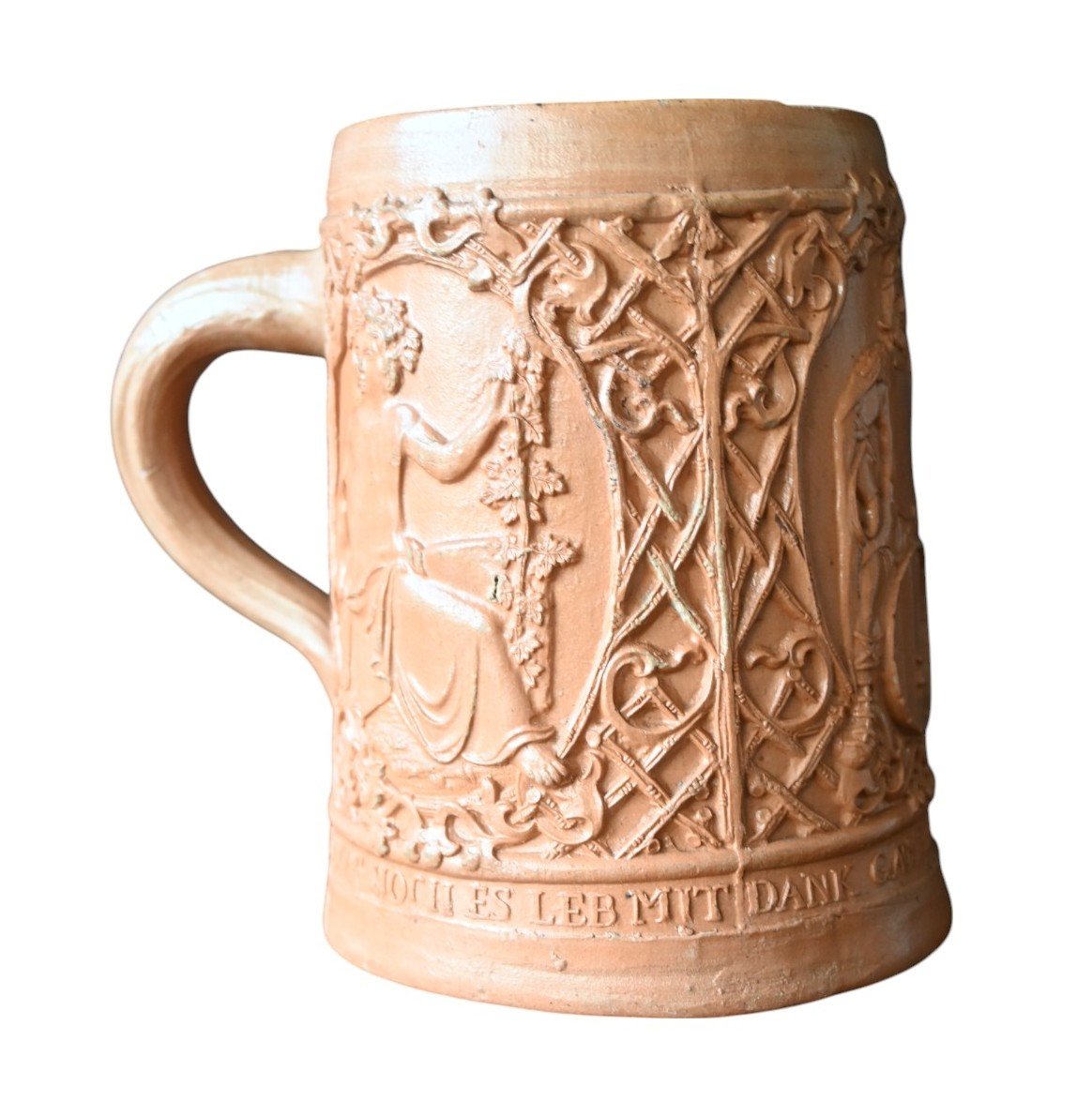







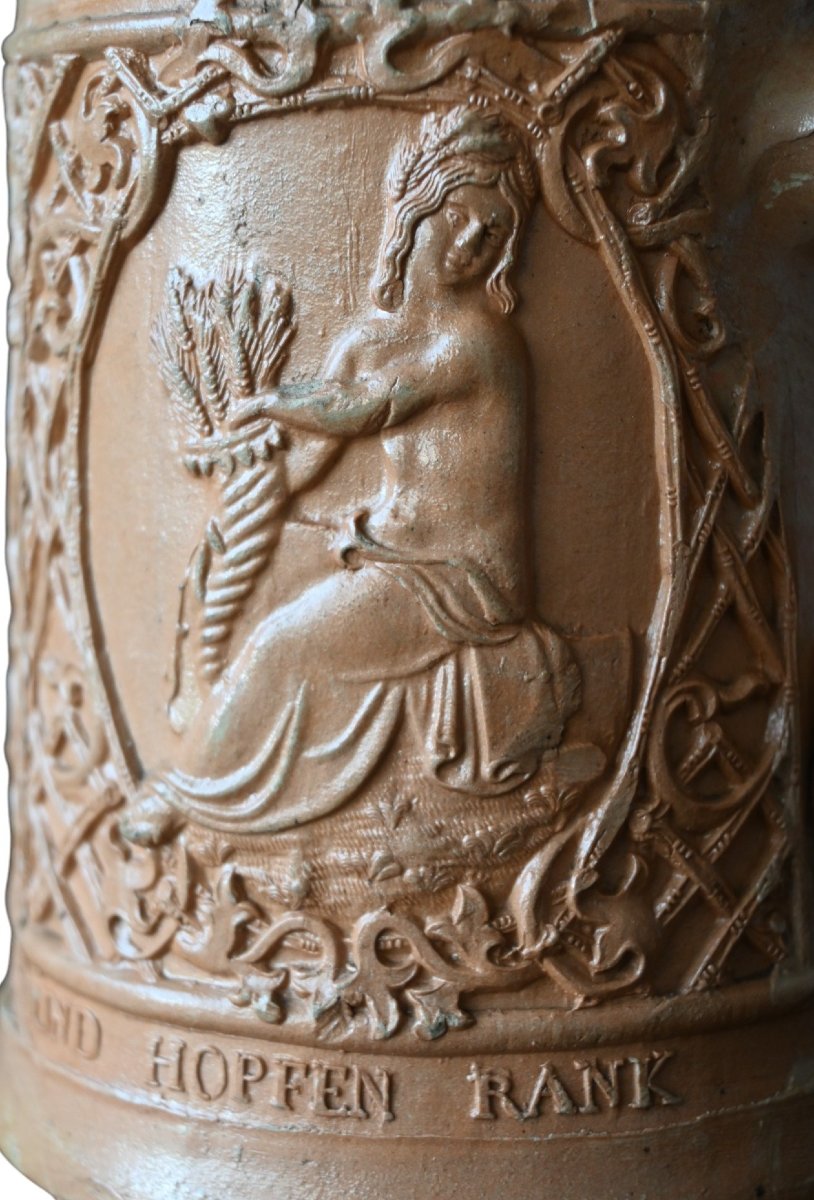


















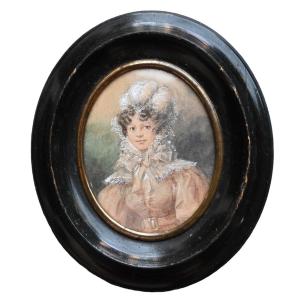


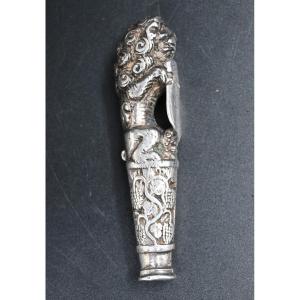


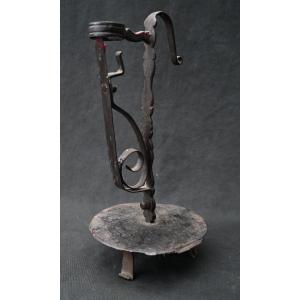


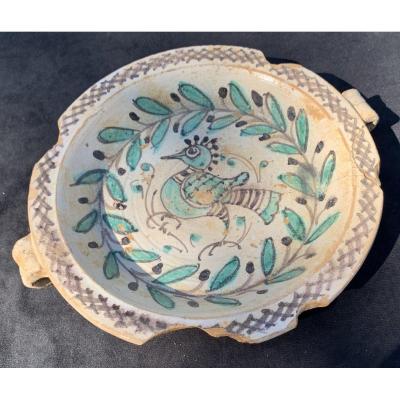


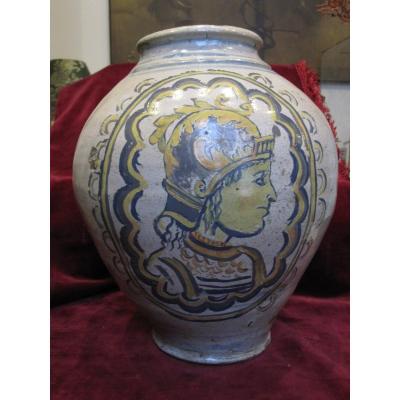



 Le Magazine de PROANTIC
Le Magazine de PROANTIC TRÉSORS Magazine
TRÉSORS Magazine Rivista Artiquariato
Rivista Artiquariato